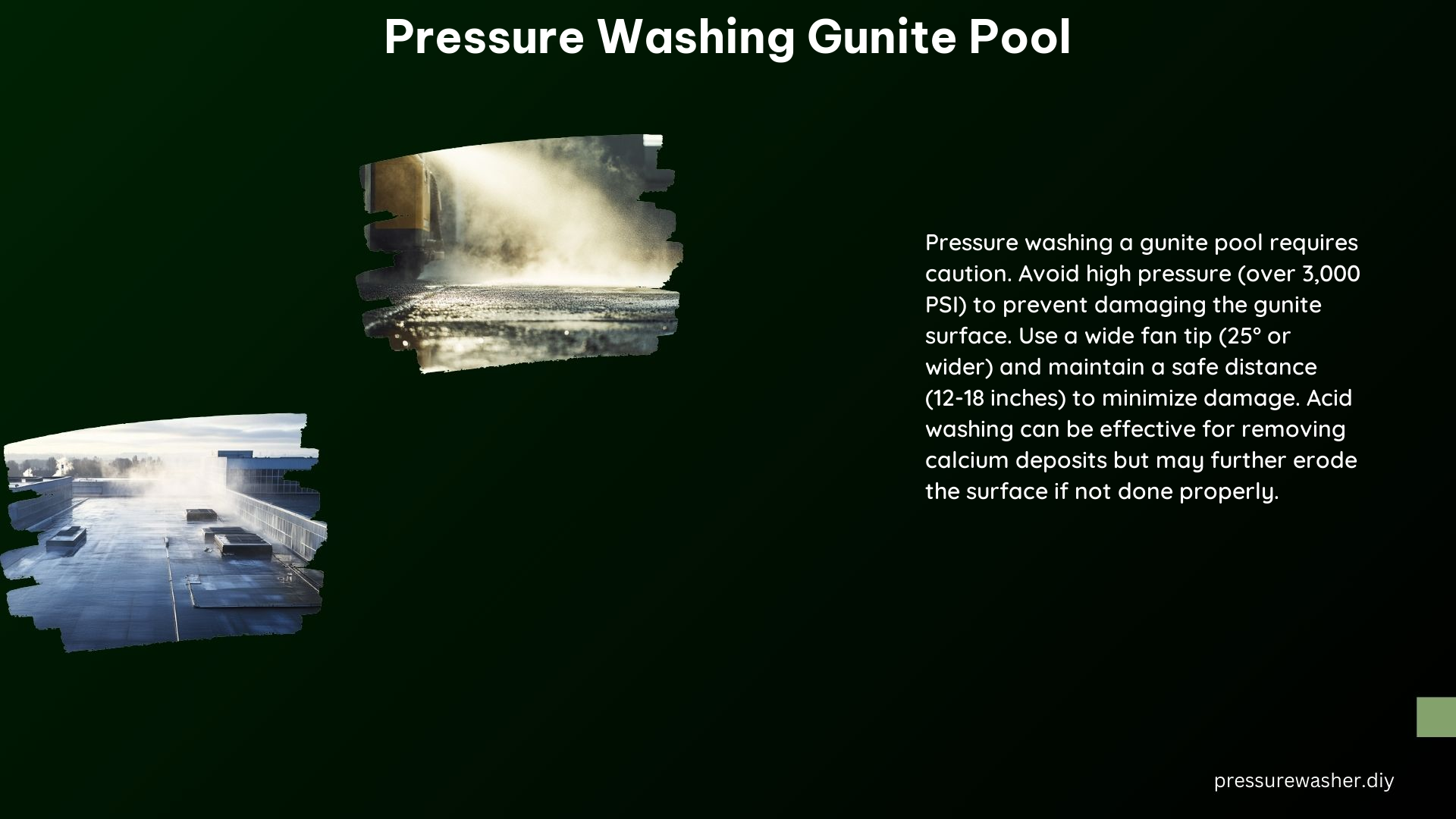Pressure washing a gunite pool can be a delicate task, requiring careful consideration to avoid damaging the pool’s surface. This comprehensive guide will provide you with the necessary information to safely and effectively pressure wash your gunite pool, ensuring a sparkling clean finish without compromising the integrity of the surface.
Is it Safe to Pressure Wash the Inside of a Gunite Pool Surface?
Yes, pressure washing can be used to clean a gunite pool, but it is crucial to use the right equipment and techniques to avoid damaging the surface. Gunite, a mixture of sand, cement, and water, is a durable and long-lasting pool surface material. However, it can be susceptible to damage if the pressure washing process is not carried out properly.
A light acid wash is often recommended to remove calcium deposits and other stubborn stains from the gunite surface. This process involves using a mild acid solution, such as muriatic acid, to dissolve the deposits without causing significant damage to the pool finish. Pressure washing should only be done if the pool finish is in good condition and can withstand the pressure without compromising the surface.
Recommended Pressure Washer Specifications for Cleaning a Gunite Pool

When it comes to pressure washing a gunite pool, the key is to use low to moderate pressure settings. Recommended pressure ranges from 1,000 to 2,000 PSI (Pounds per Square Inch). Using a pressure washer with higher PSI settings, typically above 2,000 PSI, can lead to significant damage to the gunite surface.
High-pressure settings can cause discoloration, etching, or even remove the white Portland cement, leaving the aggregate visible. This can result in an uneven, orange or yellow appearance, which can be aesthetically unpleasing and compromise the overall look of the pool.
To ensure even distribution of the pressure and minimize the risk of damage, it is recommended to use a wide-angle (25° or wider) fan tip nozzle. This type of nozzle helps to spread the water pressure evenly across the pool surface, reducing the risk of concentrated high-pressure areas that could potentially etch or discolor the gunite.
Potential Damage from High-Pressure Pressure Washing
Using a pressure washer with high PSI settings (above 2,000 PSI) on a gunite pool can lead to several types of damage, including:
-
Discoloration: The high-pressure water can remove the white Portland cement, exposing the underlying aggregate and resulting in an uneven, orange or yellow appearance.
-
Etching: The concentrated high-pressure water can etch or pit the gunite surface, creating an uneven and rough texture.
-
Cement Removal: In severe cases, the high-pressure water can completely remove the white Portland cement, leaving the aggregate exposed and creating a rough, porous surface.
These types of damage can be difficult and costly to repair, often requiring the resurfacing of the entire pool. It is crucial to avoid using high-pressure settings when pressure washing a gunite pool to prevent such issues.
Technical Specifications for Pressure Washing Gunite Pools
To safely and effectively pressure wash a gunite pool, the following technical specifications should be followed:
| Specification | Recommended Setting |
|---|---|
| Pressure | 1,000 to 2,000 PSI |
| Nozzle | Wide fan tip (25° or wider) |
| Distance | Maintain a minimum of 12 inches between the nozzle and the pool surface |
| Chemicals | Use a mild detergent or acid wash specifically designed for pool cleaning |
It is important to note that these specifications are general guidelines, and the actual settings may need to be adjusted based on the condition of the pool surface and the specific pressure washer being used.
Additional Tips for Pressure Washing Gunite Pools
-
Test a Small Area First: Before pressure washing the entire pool, it is recommended to test the equipment and technique on a small, inconspicuous area to ensure the surface will not be damaged.
-
Use a Wide Fan Tip Nozzle: As mentioned earlier, a wide-angle (25° or wider) fan tip nozzle helps distribute the pressure evenly, reducing the risk of damage.
-
Maintain a Safe Distance: Keep the pressure washer nozzle at least 12 inches away from the pool surface to prevent direct, high-pressure contact that could lead to damage.
-
Monitor the Pool’s Condition: Regularly inspect the pool’s surface during the cleaning process and be prepared to stop if any signs of damage are noticed.
-
Consider Hiring a Professional: If you are unsure about your ability to safely pressure wash the gunite pool, it may be best to hire a professional pool cleaning service with experience in this task.
By following these guidelines and technical specifications, you can safely and effectively pressure wash your gunite pool, ensuring a clean and well-maintained surface without compromising the integrity of the pool finish.
